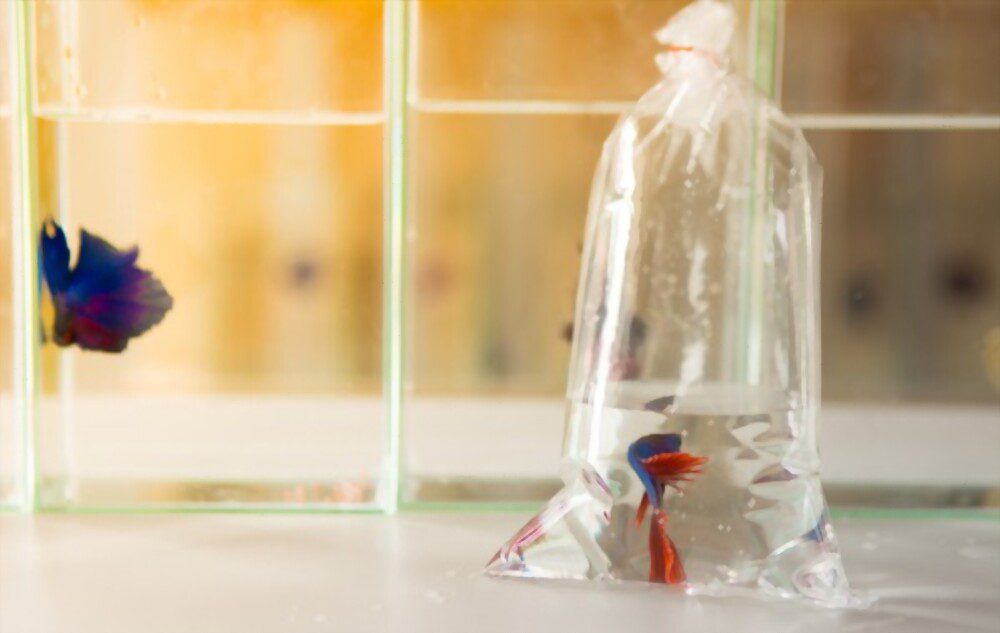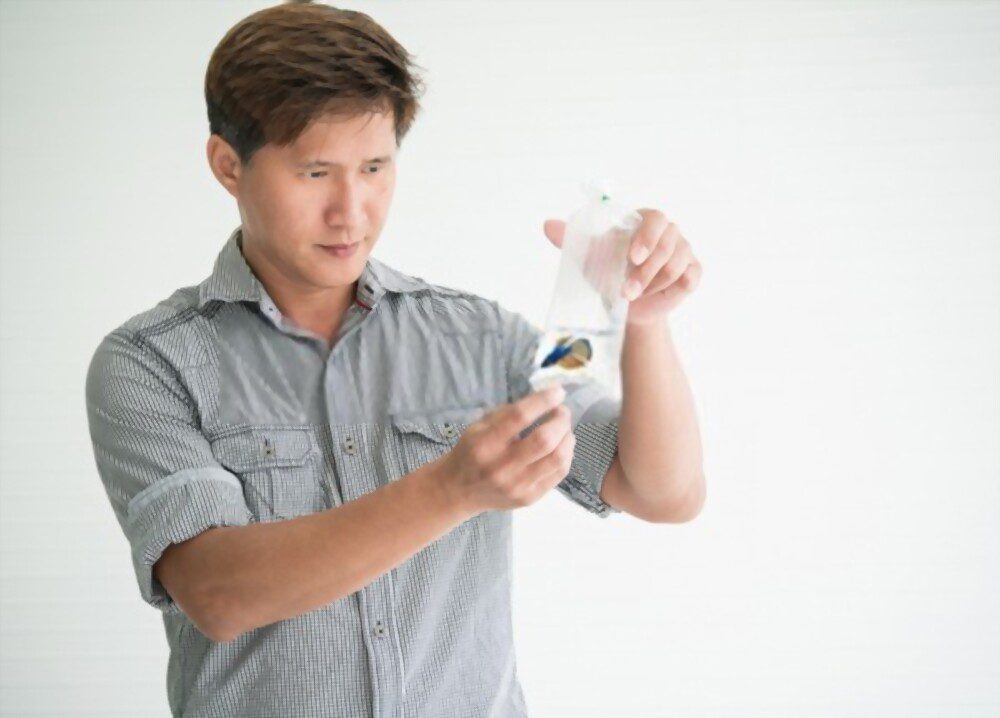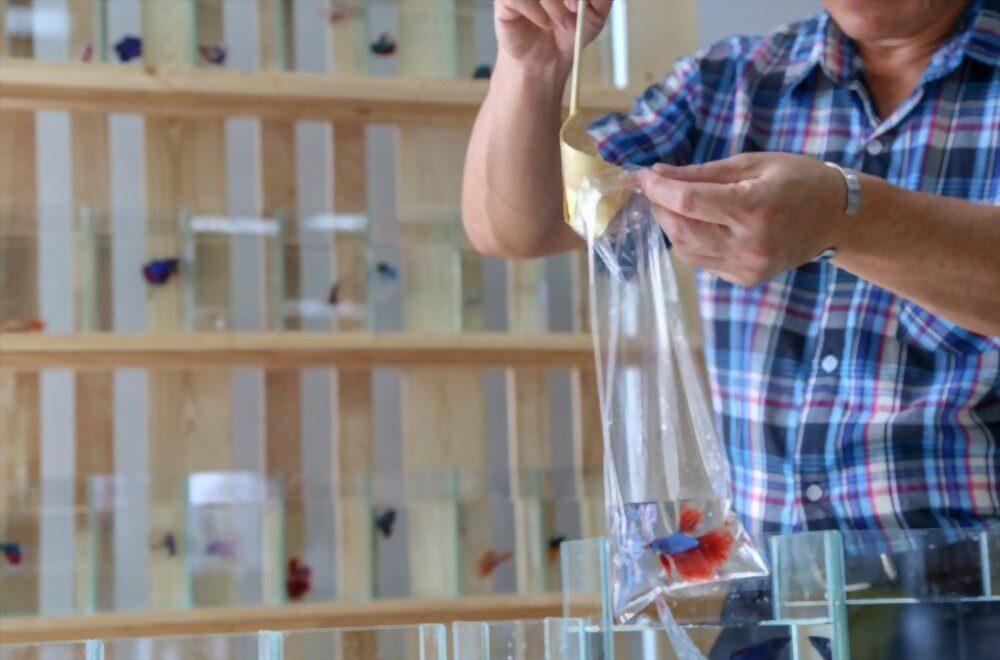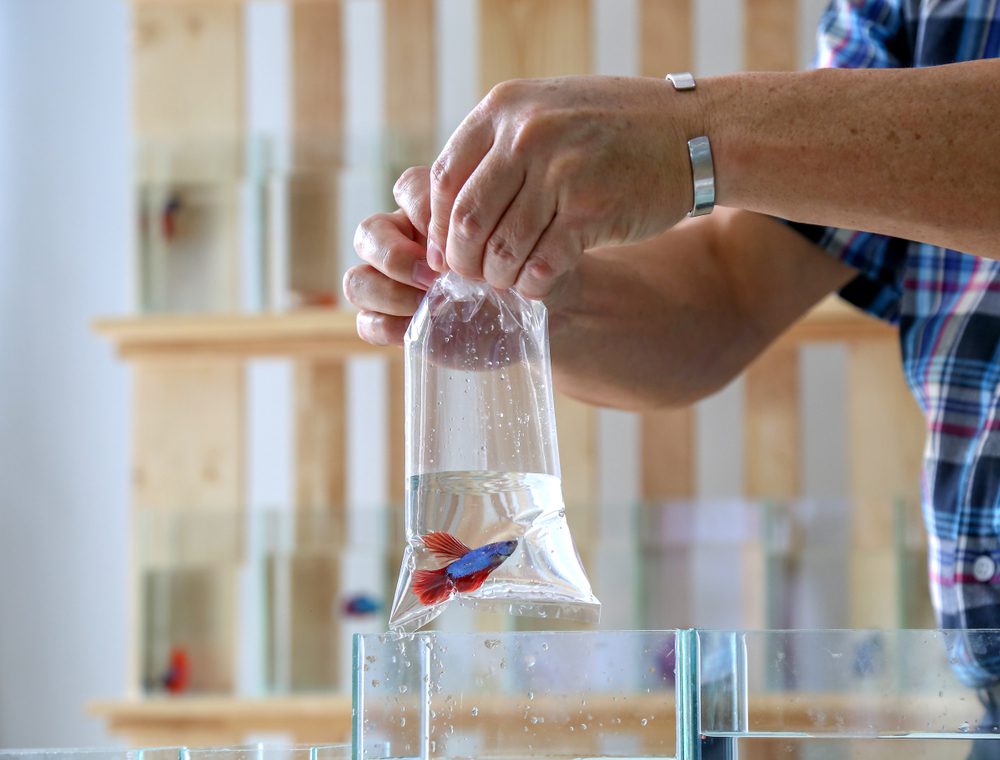So you have bought a new betta fish? Congratulations! You made a great decision. Don’t worry if you don’t know how to introduce your betta fish to its new home. I am going to provide you with a step-by-step guide.
When I first bought the betta fish, I had the same question. How long should I wait to introduce my betta to the fish tank? Luckily, after some research, I found the answer.
On average, you should wait at least 30 minutes before you introduce your betta fish to a new tank. First, allow the fish container to be immersed in the tank without removing the fish from the plastic bag. Do this for at least 15 minutes. In the next 15 minutes, you should gradually introduce water from the tank into the plastic bag until the fish has acclimated to the water temperature of the new tank. And then you can release the fish to its new home.
There are a lot of different things that could go wrong while you are in the process of acclimating fish to their new environment. which can lead to the death of your fish, which can be a very heartbreaking experience for you.
Don’t worry, I’ll walk you through the process of acclimating your betta fish to the environment of your fish tank step by step. So let’s get started:
- 1 A Step-by-Step Process of Introducing Your Betta Fish to a New Tank
- 2 Watch Video
- 3 1- Change The Water Before Adding Your Betta To The New Tank
- 4 2- Use The Water Conditioner To Remove Chlorine.
- 5 3- Make Sure The Filter Is Clean And Working Properly.
- 6 4- Clean The Gravel In Your Tank.
- 7 5- Add Some Plants And Decorations.
- 8 6- Make Sure Your Betta Has Plenty Of Space To Swim.
- 9 7- Make Sure Water Parameters Are Right For Your Betta.
- 10 8- Let The Water Sit For Some Time Before Introducing Your Betta.
- 11 9- Let The Betta Acclimate For At Least 15 Minutes.
- 12 11- Don’t Forget To Feed Your New Betta Fish.
- 13 12- Avoid Doing Unnecessary Things That May Stress Out Your Fish.
- 14 Related Questions
- 15 Conclusion
A Step-by-Step Process of Introducing Your Betta Fish to a New Tank
- Change the water before adding your Betta to the new tank.
- Use the water conditioner to remove the chlorine.
- Make sure the filter is clean and working properly.
- Clean the gravel in your tank.
- Add some plants and decorations.
- Make sure your Betta has plenty of space to swim.
- Make sure the water parameters are right for your Betta.
- Let the water sit for some time before introducing your Betta.
- Let the betta acclimate for at least 15 minutes.
- Don’t pour the whole content directly into the new tank.
- Don’t forget to feed your betta fish.
- Avoid doing unnecessary things that may stress out your fish.
Watch Video
1- Change The Water Before Adding Your Betta To The New Tank

It is always a good idea to change the water before introducing your new betta fish. Water changes will remove all of the ammonia, nitrites, nitrates, and chlorine that may have been present in your aquarium. Water changes also help maintain cleaner water conditions by removing waste products from the tank that could harm your fish.
You should not use mineral water in the tank. Mineral water contains high levels of carbon dioxide and low levels of oxygen, which is not beneficial for your fish.
Instead, you can use tap water that has been purified. You can also use bottled or distilled water, but it is important that you do not use mineral water since it lacks important minerals that your betta fish will need to thrive in Its new environment.
2- Use The Water Conditioner To Remove Chlorine.
Tap water can have chlorine, which is harmful to fish, filtered out of it using a water conditioner. The water conditioner will filter out other impurities and heavy metals. Remember to add this as you continue to fill the tank with water after you have finished following the instructions on the bottle of conditioner.
Each time you replace the water in the fish tank, you will need to add a conditioner to the new water (generally once a week).
3- Make Sure The Filter Is Clean And Working Properly.
You will need to remove the filter and clean it with a brush. Make sure that you are cleaning the entire surface area of the filter, including any bumps or protrusions on top of the aquarium glass. You should check for any signs of debris inside your filter as well.
If you notice anything stuck inside your filter, try removing it by hand if possible, or else use tweezers to fish out whatever might be causing problems for your new betta fish friends!
4- Clean The Gravel In Your Tank.
It’s a good idea to clean the gravel in your tank as well. You will want to remove all of the debris that may have been left behind by other pets in their old home (especially if they were rodents).
Next, make sure there is no rotten food at the bottom of your tank. This could be dangerous for your fish! If there are any dead leaves or twigs at the bottom of the tank, then simply remove them so nothing gets stuck between filters/pipes later on down the road, because it can make your filter stop working altogether, preventing any water flow whatsoever, making things worse than before!
5- Add Some Plants And Decorations.
Now that you’ve got your tank set up and it’s time to introduce the new fish, it’s time to add some plants and decorations. Plants are good for betta fish because they provide cover for him/her and hide spaces for them to swim in when he/she feels like swimming around.
Decorations are also great additions because they can be used as shelters or hiding places for your new betta fish.
6- Make Sure Your Betta Has Plenty Of Space To Swim.

As with any other new addition, it is important to make sure that your betta fish has adequate space to move around and explore its surroundings.
You should not put too many fish in the tank at once because they can become aggressive towards each other and stress out the others. If you do decide to add more than one new Betta fish to your tank, keep an eye on them so they don’t become aggressive and get stressed out.
Also, make sure that there aren’t too many decorations in the tank; otherwise, this will cause problems for everyone involved.
7- Make Sure Water Parameters Are Right For Your Betta.
Once you’re ready to introduce your betta fish, it’s important that the water temperature and pH levels are right for them. The ideal range for pH is between 6.5 and 8. Anything lower or higher can be harmful to your betta fish.
If you don’t know how to test the pH level of your fish tank water, follow these steps:
- Fill a clean container with test water first. You must ensure that the water level is sufficient to submerge the pH testing strip.
- Second, briefly submerge one of the test strips in the water container. The test strip will briefly change color. Once the strip has changed color, the pH level may then be determined.
- A pH color chart would have been included with the pH testing strip. Match the color of the dipped pH testing strip to the colors on the pH color chart to determine the pH level of the sample water.
Ideal Water Parameters For Betta Fish
| Parameter Name | Value |
|---|---|
| Water Temperature | 75-80°F (24-27°C) |
| pH Level | 6.5-8 |
| Ammonia and Nitrite | 0 ppm |
| Nitrate | |
| General Hardness (GH) | 3-4 dGh |
| Carbonate Hardness | 3-5 dKH |
8- Let The Water Sit For Some Time Before Introducing Your Betta.
Betta fish are very vulnerable to fluctuations in water quality. Water quality problems are almost certain if you place your Betta in a tank with a lot of debris. Maintaining stable and clean water conditions is crucial before introducing the Betta.
Wait Some Time Before Introducing Your Betta To The Water. This will enable the water to grow cleaner as the gravel settles to the tank’s bottom.
9- Let The Betta Acclimate For At Least 15 Minutes.

The temperature of the water in the bag, which contains the betta, may be brought up to the same level as the temperature of the water in the new tank by allowing the bag to float at the top of the tank. At the very least, let the bag sit in the tank for 15 minutes.
10- Don’t Pour The Whole Content Directly Into The New Tank.
Don’t immediately transfer the Betta fish from the glass bowl or store’s plastic bag to the aquarium. This can contaminate clean water and make your new pet sick. Instead, you’ll want to carefully open up a small section of your tank. A section that is large enough for your Betta fish to swim in comfortably and submerge the fish container without removing the fish from the bag.
Next, add tank water to the plastic bag little by little until the fish is acclimated. This can take anywhere from 15 to 30 minutes, depending on how quickly your Betta will adjust to its new environment and what time of day it is when you start this process.
Once the fish has acclimatized itself to the temperature of the aquarium, you’re now ready to transfer it into its new home. You can use a fish net and drain and throw away some of the water from the container before placing it inside your tank. Don’t throw this water into the tank but instead discard it down a toilet or sink.
11- Don’t Forget To Feed Your New Betta Fish.
There is no room for error when it comes to providing nutrition for your brand-new Betta fish. For this reason, we prescribe a nutritious diet that takes into account its age, size, and the amount of exercise it gets. Another thing we have for you is that they should be given a wide range of things to choose from when it is time for them to eat.
12- Avoid Doing Unnecessary Things That May Stress Out Your Fish.
It is in your fish’s best interest to avoid any additional steps or processes that aren’t essential since doing so might cause them stress.
Be careful not to bother your other fish too often; if they were just intended for breeding reasons, then this would be alright; but, if they are doing well enough already, you shouldn’t worry too much about disturbing them too much!
Related Questions
How Do You Know If Your New Betta Fish Is Healthy?
If you are worried about the reliability of the Betta Fish store, you may construct a tiny fish tank identical to your main tank to allow your pet time to acclimatize to its new surroundings. If the fish is still in excellent health after at least 7 days, you may transfer it into the main tank.
As a result, the fish will show no indications of stress or disease. If you put yourself in the shoes of a fish and picture being subjected to abrupt temperature changes, you could have a better idea of the stress they face.
Do I Have To Wait 24 Hours To Put Fish In The Tank?
In total, you should only wait for 30 to 45 minutes before you introduce your fish to its new home. First, acclimate the plastic bag in your fish tank. Spend at least 15 minutes doing this. In the next 15-30 minutes, slowly pour water from the tank into the bag until the fish is used to the temperature of the water in the new tank.
Can You Put Another Fish With A Betta Fish?
Betta fish are naturally territorial, so you shouldn’t put more than one of them in the same tank. If they do, they will fight and hurt each other, and one of them will usually die. They probably won’t get lonely in their tank, but if it’s too small, they might get bored.
A betta fish can live with:
- Kuhli Loaches
- Harlequin Rasboras
- Cory Catfish
- Snails
- Ghost Shrimps
- African Dwarf Frogs
But in order to add these new friends, the tank will need to be bigger and the filtering system will need to be changed. This is needed to make sure that everyone stays clean and healthy.
Conclusion
You should now be prepared to introduce your new betta fish after reading all of the information that was provided above. Keep in mind that you need to do things slowly and check that each step has been completed accurately.
Also, remember to give your other fish in their tank the best possible care so that they do not get too stressed or ill from being in a foreign environment. Congratulations, in the event that all goes according to plan! You have just acquired a stunning new aquarium that will serve as the new home for your betta fish.

